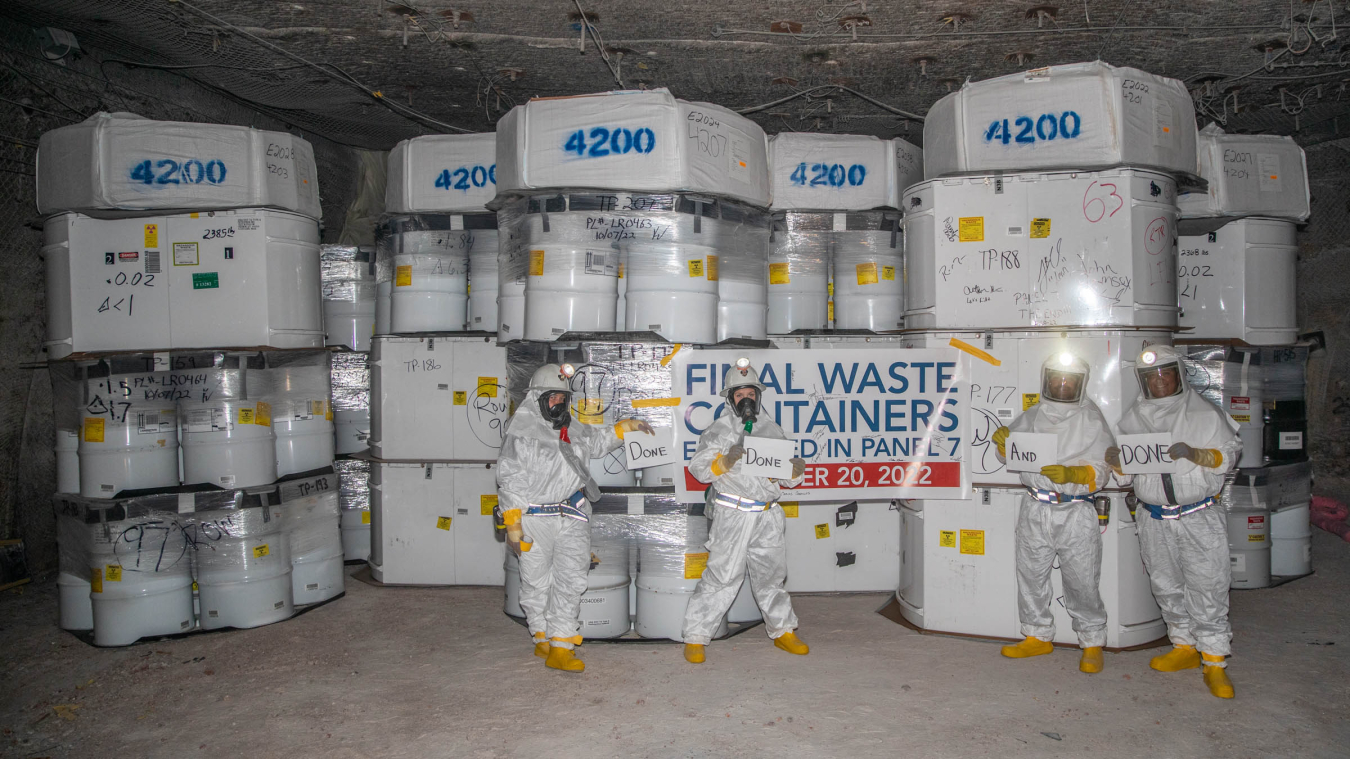
CARLSBAD, N.M. – At long last, Panel 7 at EM’s Waste Isolation Pilot Plant (WIPP) is full.
Crews carefully stacked the last column of transuranic (TRU) waste containers in the panel’s final disposal room on Thursday, completing emplacement activities prior to the panel being permanently sealed.
“This important milestone has been a long time coming,” said Carlsbad Field Office Manager Reinhard Knerr. “Filling Panel 7 allows us to continue our important national mission of disposing of transuranic waste, which ensures people living near sites where TRU waste is currently stored are safer today because of WIPP’s role in EM’s nuclear waste cleanup strategy. I’m very appreciative of our dedicated workforce and all that they do.”
Emplacement activities next move to the newly mined Panel 8, which received official certification from the New Mexico Environment Department (NMED) in August. NMED regulates the disposal of radioactive and hazardous mixed waste at WIPP.
“This is a tremendous milestone and marks the beginning of a new day at WIPP,” said Sean Dunagan, president and project manager for Nuclear Waste Partnership, WIPP’s management and operations contractor. “I am extremely proud of our employees and their hard work.”
NEW VIDEO ALERT: In this video, members of EM’s Waste Isolation Pilot Plant (WIPP) team share the story of an important milestone they recently achieved — completing emplacement activities in Panel 7 of the WIPP underground waste repository prior to sealing the panel permanently.
Dunagan also expressed appreciation for local communities, waste generator sites across the DOE complex and the National Transuranic Program. EM established that program to oversee the process of preparing TRU waste from waste generator sites to meet WIPP requirements, and provide guidance and requirements for receiving the waste at the underground waste repository.
“I also want to thank the Department of Energy and our host communities, Carlsbad and Hobbs, for their support,” Dunagan said. “Last, I want to send out a special thank you to all the waste generator sites around the country and the National Transuranic Program for ensuring the waste they send us is safe and compliant.”
Carved from a thick layer of salt, a waste disposal room is 33 feet wide, 13 feet high and 300 feet long, the length of a football field minus the end zones. Crews filled Panel 7 from the back, starting with Room 7, to the front, ending with Room 1. Creating a panel requires mining nearly 160,000 tons of salt.
More than 2,600 waste containers are emplaced in Room 1, ranging from stacks of 55-gallon drums — 729 drums in total — to four 11,000-pound boxes transported in WIPP’s largest shipping cask, the TRUPACT-III.
The total numbers of containers in Panel 7 is 20,056. The most common containers, the 55-gallon drums, total almost 13,000.
Closure of Panel 7 will include standing up two metal bulkheads and adding 100 feet of salt from floor to ceiling. Bulkheads are used to control airflow through air circuits in the facility’s underground, 2,150 feet beneath the surface.
TRU waste began accumulating in the 1940s with the beginning of the nation’s nuclear defense program. It is comprised of debris, residues, soil, and other items contaminated with radioactive elements that have atomic numbers greater than uranium.
To receive the latest news and updates about the Office of Environmental Management, submit your e-mail address.
